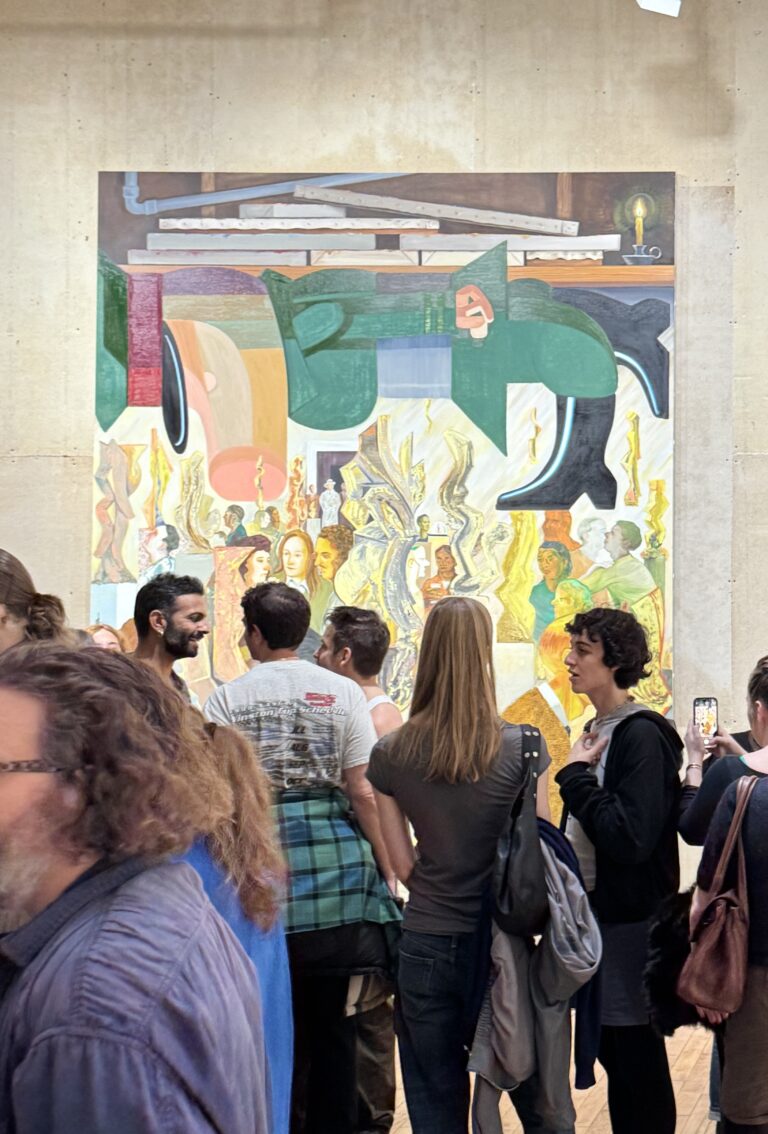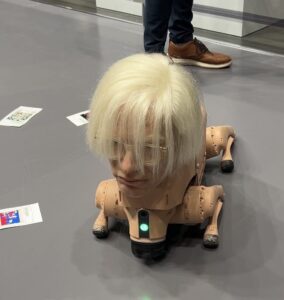An unassuming storefront on a quiet block of Manhattan's 26th Street has a backlight red-and-white sign that reads “Holographic Studios.” Pedestrians buying $50 vintage T-shirts and alcohol-infused ice cream from neighboring businesses walk right by it, completely oblivious that they have glimpsed an art historical landmark and one of the last vestiges of holography, one that has been documented in a large number of notable culture publications.

Holographic Studios is the world’s oldest holography gallery and is the face of holograms in New York. In the hole-in-the-wall space, holograms glow with neon and psychedelic colors against a backdrop of basement-chic exposed industrial pipes and 1970s wood paneling. In the subterranean lab space below, Jason Sapan (nicknamed Doctor Laser) sports a white lab coat and wanders his dark, labyrinthian studio making the 3D specimens.
“A hologram is an impression of light similar to a mold,” Doc Laser explains while holding up the mold his student made when casting John Waters’s face in the ’70s. This is a fairly simple way of explaining a process that requires advanced knowledge of physics. As one of the only people that makes the universally cool art form, Doc Laser has been able to spend time with some of the most interesting New Yorkers. In the ’70s, he famously was asked by Andy Warhol if he could do a hologram portrait of the artist; the result is currently on display at the Aspen Art Museum. He has also worked with Bill Clinton, Bill Gates, The Sultan of Brunei, Isaac Asimov, George Balanchine and former Prime Minister of the United Kingdom Edward Heath.

Doc Laser’s internship program, where he mentors young artists, has also had some notable alumni. Jason Corsaro went on to become the Grammy Award-winning recording engineer for Madonna’s “Like a Virgin” and David Bowie’s “Modern Love.” Academy Award winner John Gaeta discovered special effects techniques while working on a cylindrical hologram that he would later use in the iconic bullet dodging scene in The Matrix. Additionally, Doc Laser would frequently discuss physics theory with intern Vince Gilligan. Did these conversations possibly contribute to the naming Walter White’s “Heisenberg” alter-ego in Gilligan’s television series Breaking Bad? We can only speculate. But what we can say for sure is that there is something special going on at Holographic Studios.

Due to the pandemic, Holographic Studios has suffered significant business losses. In order to stay open, the institution will need to raise a considerable amount of money fast. Its closure would be a devastating blow to the history of art and could result in the borderline-extinction of many forms of holographic printing. How could we let holograms, such a universally beloved art form, die? Let’s keep this science cool.
Holographic Studios will be throwing a fundraising event on March 3 at its Gramercy location. If you are interested in helping keep Holographic Studios alive, please donate or share posts on social media that raise awareness about the possible closing of this beloved New York institution










 in your life?
in your life?

